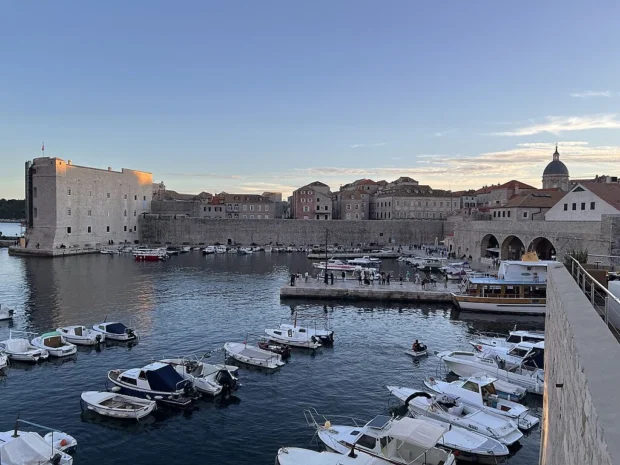Dubrovnik sits along the coast, shining like a piece of old Europe wrapped in blue water and sun. This city in Croatia is famous for high stone walls and red roofs, but spending time here shows you more than photos can hold. From walking ancient city walls to tasting dishes served near the sea, Dubrovnik invites visitors into its stories, culture, and lively streets. We spent days chatting with locals and walking quiet corners. Let us take you on a walk through the city, sharing moments and tips for a stay that feels both known and freshly discovered.
Table of Contents
For those interested in other historic European cities with charming streets and rich culture, Bruges offers a unique blend of medieval beauty and lively daily life worth seeing.
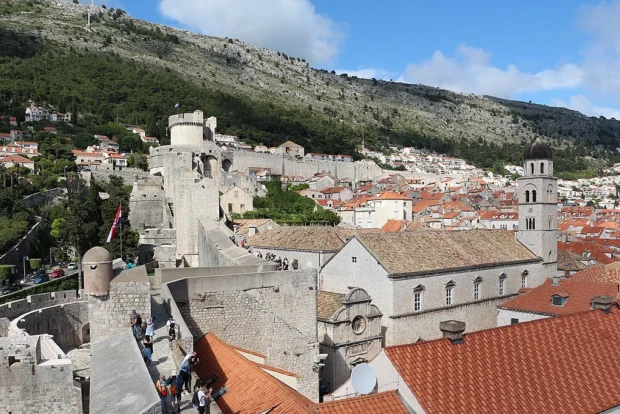
City Walls and Historic Streets
The city walls are probably the first thing many think about when hearing “Dubrovnik.” These thick, tall walls circle the Old Town, built to keep the city safe centuries ago. Walking the full 2 kilometers along the walls gives views you won’t forget-red roofs against the turquoise sea, narrow alleys below, and boats dotting the harbor. Keep your camera ready as the light changes; early morning or late afternoon gives the best colors.
To deepen your visit, try wandering through Dubrovnik Old Town’s Ancient Walls for a closer look at the city’s medieval heart and views that connect past and present.
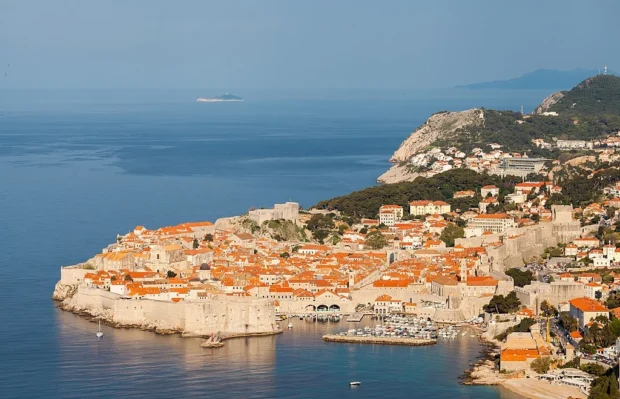
Inside the walls, streets are mostly made of white limestone. They reflect sunlight so brightly that you might need sunglasses even on cloudy days. The main street, Stradun, is smooth and wide compared to other narrow lanes. It is lined with shops, cafes, and small museums. When we stopped at a café here, a local told us how the city was once a wealthy trading center connecting the Mediterranean to the Balkans.

For example, the Rector’s Palace shows gothic and renaissance styles combined, a reminder of Dubrovnik’s rich political past. This site official city walls site also offers useful information to plan your walk and other historic sights.

Navigating the City and Arrival Tips
When you first arrive in Dubrovnik, you probably land at the Dubrovnik Airport. From the airport, there are frequent buses heading toward the city center; the ride takes about 30 minutes. During busy summer months, seats can fill quickly, so arrive early or check schedules in advance. Buses stop near the old town gates, making it easy to begin exploring soon after arrival.

Inside the city, walking is the best way to see everything. Roads are often cobblestone and narrow, not suitable for cars in most parts, especially in the Old Town. If you want to visit beaches outside the center, city buses connect to places like Banje Beach or Lapad Bay, areas known for lovely sea views and relaxing spots. For a day trip, local boats run to nearby islands as well.

Staying in Dubrovnik: Neighborhoods to Choose
Choosing where to stay depends on what kind of atmosphere you like. Staying inside the Old Town means waking up right among history but expect less quiet at night due to tourists and evening events. It’s wonderful if you want to feel the city alive around you.

For a calmer experience, neighborhoods like Ploče or Lapad offer modern apartments and hotels with sea views. These areas have beaches and promenades packed with cafes and bakeries, giving you a taste of everyday Croatian life beyond tourist spots. We liked walking early in the morning in Lapad; locals jogged or walked their dogs along the coast, greeting each other with a smile.
For travelers intrigued by historic city centers, Stockholm’s Gamla Stan offers a glimpse into medieval streets and royal heritage that complements Dubrovnik’s old town charm.

Eating and Drinking in Dubrovnik’s Districts
Food in Dubrovnik mixes Mediterranean flavors with Croatian traditions. In the Old Town, you’ll find many seafood restaurants, where fresh fish and shellfish are local specialties. A dish called “black risotto” made with cuttlefish ink is rich, tasty, and not very common outside the region.

Further from the center, in areas like Gruž, smaller markets and bakeries offer more affordable and authentic choices. We found a small bakery selling “pogača” bread with olive oil, a simple but perfect snack common for locals. The morning market at Gruž is lively and colorful, full of fresh fruits, vegetables, and homemade cheese.
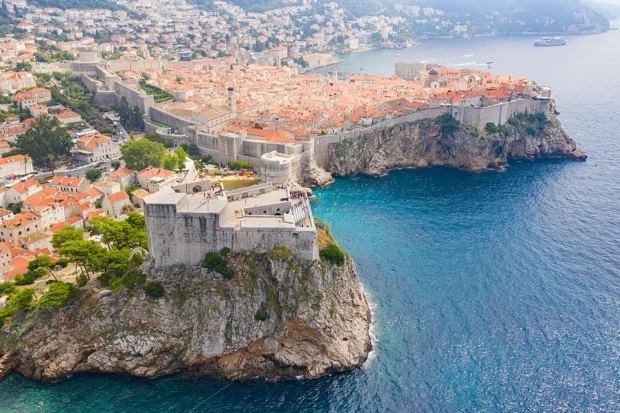
For drinks, try Croatian wines or rakija, a fruit brandy often homemade. You might be invited to taste rakija by a shopkeeper or during a conversation with locals; it is a sign of welcome, but remember to sip slowly!

Culture and Customs to Remember
When you meet Dubrovnik’s residents, respect and friendliness open many doors. It’s a small city with strong pride in its history and culture. Speaking politely and greeting with a simple “dobar dan” (good day) or “hvala” (thank you) shows you care to connect.

One small but important custom: when entering a church or religious monument, dress modestly. Shoulders and knees covered show respect for these sacred places. Photography inside churches is often not allowed, so watch for signs or ask politely.

We learned that people in Dubrovnik value quiet hours, especially after 10 p.m. Loud noise and parties in residential areas can upset neighbors and are frowned upon. So, savor the evenings with calm walks or quiet dinners.
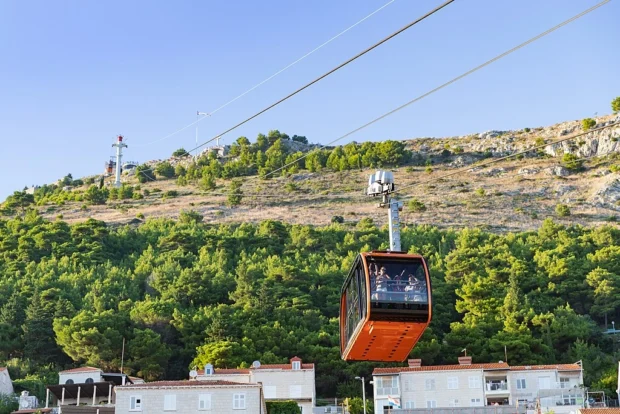
Anecdotes and Surprisingly Little-Known Stories
Did you know that Dubrovnik once rivaled Venice as a maritime power? The Republic of Ragusa, as it was known, thrived on sea trade and diplomacy. Old documents tell how the city paid tribute to avoid wars and kept its independence for centuries. This story was shared with us by an elder at a bookshop full of ancient maps and manuscripts.
On a quiet afternoon, we found a small ceramic shop where an artist showed us hand-painted tiles inspired by medieval patterns. These arts connect the city’s past to its present, weaving tradition into everyday life. Such small shops can often be missed but add a layer of richness to any visit here.
Religious Monuments Beyond the Obvious
The Franciscan Monastery houses one of Europe’s oldest pharmacies, running since 1317. Inside, dusty jars and old books create a quiet atmosphere. Nearby, the Dominican Monastery holds a valuable museum of religious art, including paintings and silver objects that tell of faith and craftsmanship across centuries.
These places feel peaceful even on busy days and remind visitors that Dubrovnik is not only about walls and beaches but also about beliefs and arts living through time.
Summary: A City That Grows With You
Dubrovnik is more than a postcard view of ancient walls and sea. It is a place where every corner has stories to tell, from medieval trade to colorful markets, from quiet mornings by the sea to evenings filled with gentle chats. Whether wandering the limestone streets or sitting by the harbor, you become part of a dance between history and everyday life.
If you take your time, listen to the city, and respect its people, Dubrovnik will impress you not only with its sights but with the warmth that radiates from its stones and its people. Prepare well, move slowly, and enjoy a stay that stays with you long after the journey ends.
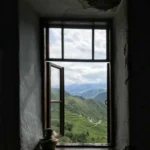
Eastern Europe travel specialist uncovering hidden gems from the Baltics to the Balkans.
- Dubrovnik, Croatia 🇭🇷 – 54844018192 by Sharon Hahn Darlin on Wikimedia Commons – cc by 4.0
- City walls of Dubrovnik 05 by Bernard Gagnon on Wikimedia Commons – cc by-sa 4.0
- Casco viejo de Dubrovnik, Croacia, 2014-04-14, DD 07 by Diego Delso on Wikimedia Commons – cc by-sa 3.0
- Along Stradun, Dubrovnik (5) (30044500225) by Richard Mortel from Riyadh, Saudi Arabia on Wikimedia Commons – cc by 2.0
- Old Dubrovnik (57) (30134410995) by Richard Mortel from Riyadh, Saudi Arabia on Wikimedia Commons – cc by 2.0
- Croatia-01615 – Cathedral in Dubrovnik (10088238353) by Dennis G. Jarvis on Wikimedia Commons – cc by-sa 2.0
- Franciscan Monastery, Dubrovnik, 14th century cloister (3) (29463618483) by Richard Mortel from Riyadh, Saudi Arabia on Wikimedia Commons – cc by 2.0
- Old town of Dubrovnik, Croatia, a view from Mount Srd (48738970521) by dronepicr on Wikimedia Commons – cc by 2.0
- 2011 Dubrownik, Baszta Bokar (01) by Marcin Konsek on Wikimedia Commons – cc by-sa 4.0
- Bokar Fortress and the Old Town of Dubrovnik, Croatia (48613181692) by dronepicr on Wikimedia Commons – cc by 2.0
- Banje Beach in Dubrovnik, Croatia (48612622823) by dronepicr on Wikimedia Commons – cc by 2.0
- Dominican Monastery in Dubrovnik 03 by Bernard Gagnon on Wikimedia Commons – cc by-sa 4.0
- Cable car to Mount Srd in Dubrovnik, Croatia (48738636363) by dronepicr on Wikimedia Commons – cc by 2.0
